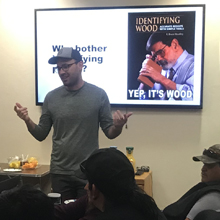Tonto National Forest Tribal Monitors Combine Traditional Ecological Knowledge with Modern Botany at UA Workshops
Tribal monitors working with WestLand and the Tonto National Forest (TNF) recently attended a series of day-long, plant identification workshops at the University of Arizona as part of their ongoing work for the Resolution Copper Project. The TNF Tribal Monitor Program was the brain child of Tribal Relations Program Manager Noni Nez Lyndon and was made possible in partnership with Resolution Copper Mining LLC. The March 2019 workshops, led by WestLand botanist Daniel McNair and Apache-Hualapai tribal monitor Dawn Rocha, included information on plant identification, plant conservation, ethnobotany, and dendrochronology, among other topics.
The tribal monitors and WestLand biologists and archaeologists continue to complete biological and cultural baseline surveys in support of the TNF’s evaluation of the proposed Resolution Copper Project. The plant-identification skills learned at the workshops, together with the tribal monitor’s traditional ecological knowledge, will provide the tools needed to identify plants during upcoming species-specific biological surveys and also provides a valuable skill set for other potential employment opportunities in the environmental sector.
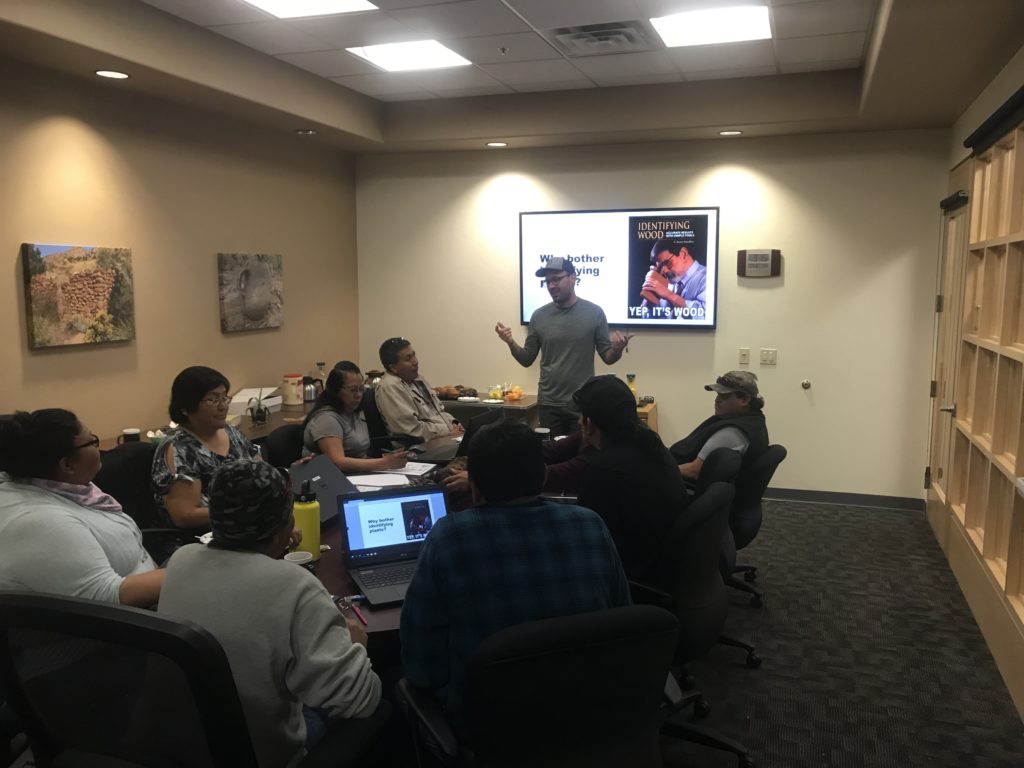
- Daniel McNair and Tonto National Forest Tribal Monitors during the Plant Identification Workshop. The workshops help train the monitors for upcoming plant surveys in Pinal and Gila counties for the Resolution Copper Project.
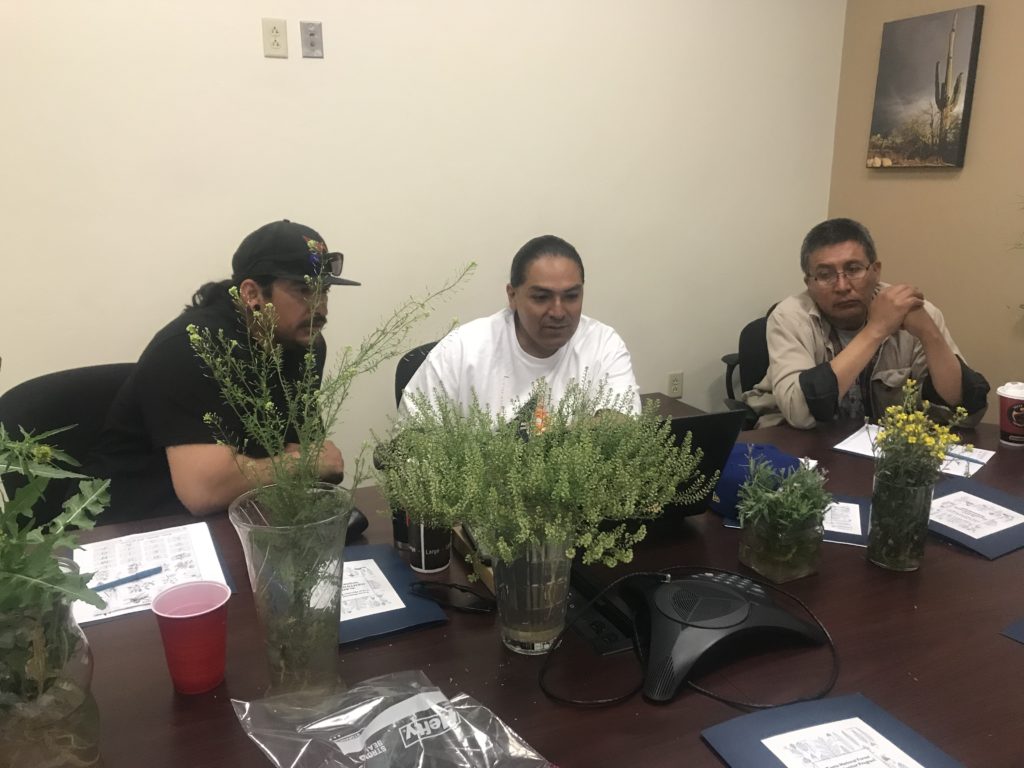
- Anthony Villareal and TJ Alvarez, both from Gila River Indian Community, and White Mountain Apache Tribe monitor Jacob Henry (right) used SEINet to identify plant resources in Arizona and New Mexico.
The workshops started with orientation and class work at WestLand’s Tucson office, followed by a visit to the U of A Herbarium where tens of thousands of preserved plant specimens from the southwest—including many rare species—are available for study by botanists and other researchers. The tribal monitors also visited the Laboratory of Tree Ring Research where they learned about tree-ring dating and paleoclimatic research in the West. Each of the workshops concluded at the Arizona State Museum where the tribal monitors received a guided tour of the museum’s collection of Native American basketry and other crafts made from native plants.
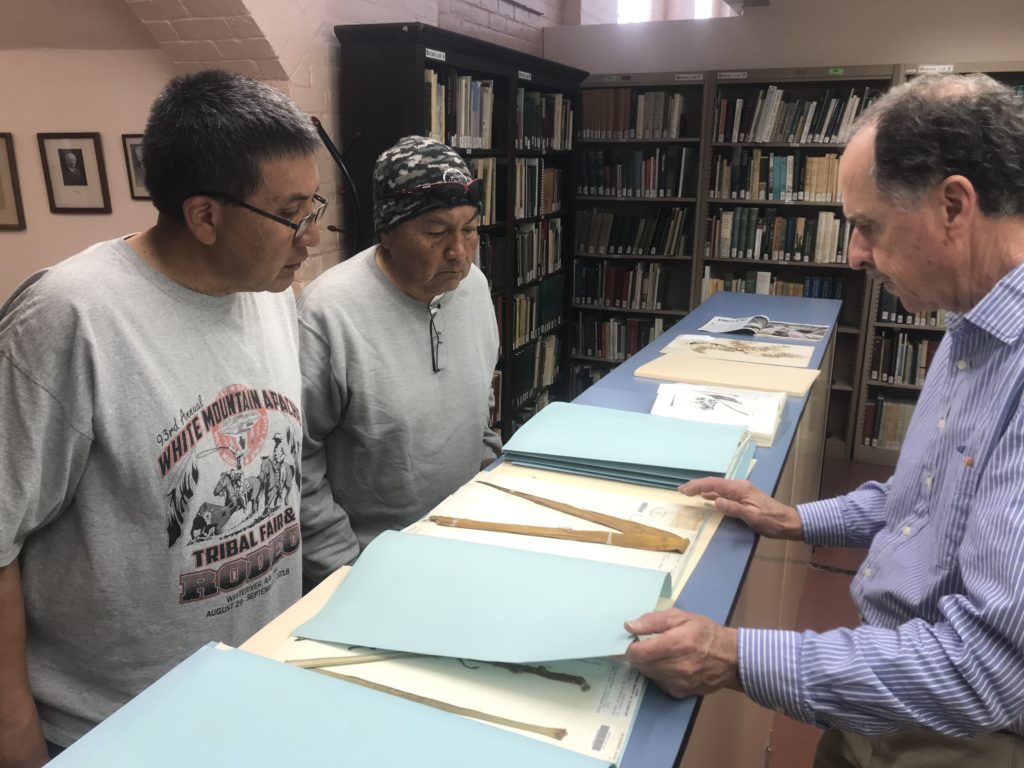
- Jacob and Lorin Henry look at type specimens with George Ferguson, curator at the University of Arizona Herbarium at Herring Hall. The herbarium hosts one of the largest southwestern plant collection in the world and is open to the public.
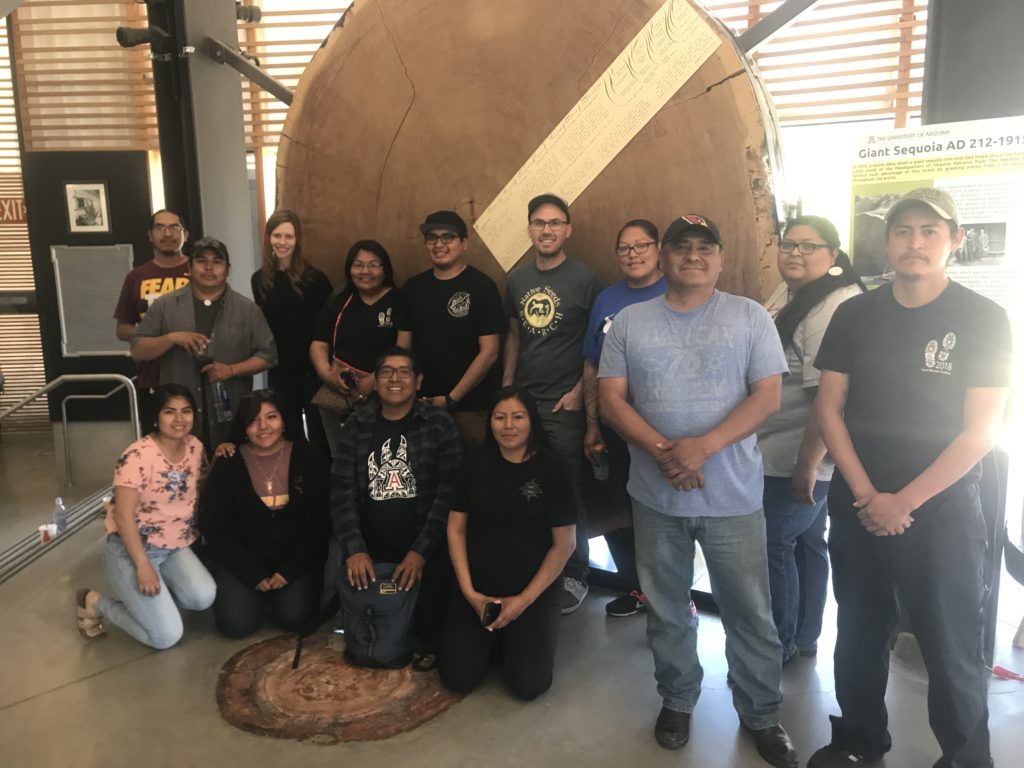
- The TNF Tribal Monitoring team and Vicky Peacey with Resolution Copper in front of an ancient redwood tree at the Laboratory of Tree-Ring Research.
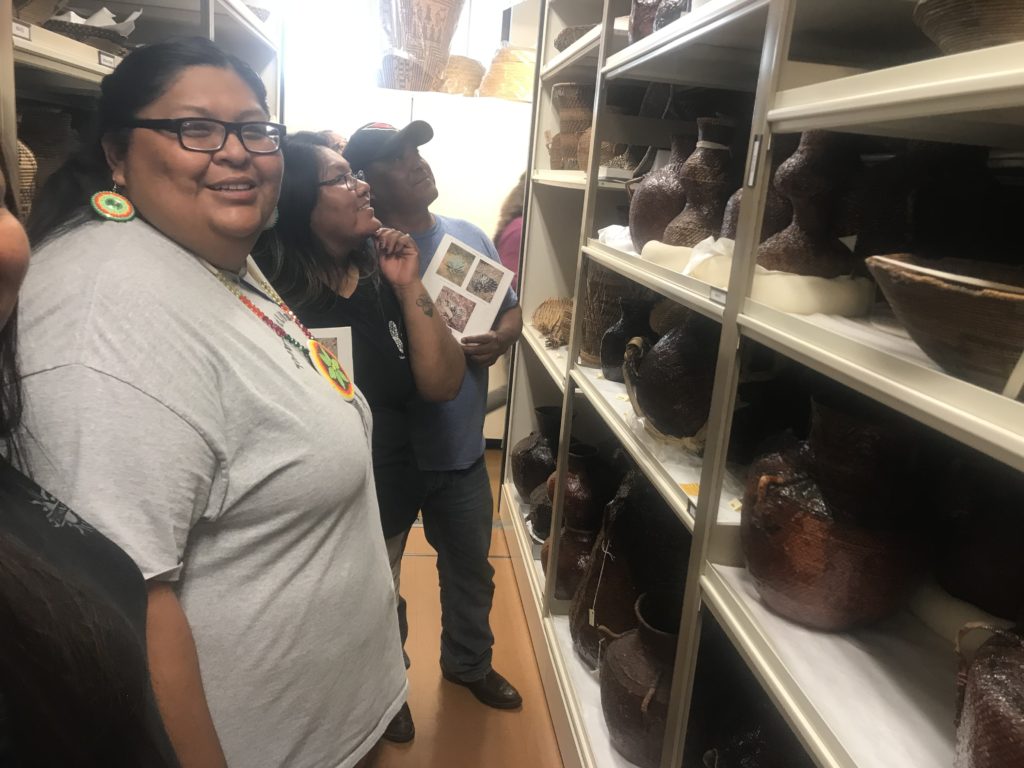
- Dawn Rocha (left) and the rest of the tribal monitors toured the Arizona State Museum basketry room.
Seed packs containing Apache and O’odham devil’s claw (Proboscidea sp.) from Native Seed S.E.A.R.C.H. were also provided to each of the tribal monitors along with information about current efforts to preserve Native American plant heritage. The tribal monitors also received a small PDF library of plant-identification guides and other relevant literature for future reference.
This July, researchers from WestLand and the TNF Tribal Monitor Program will be presenting their ongoing work on soapberry (Sapindus saponaria) at the Botany 2019 Conference in Tucson (Anatomy of a Soapberry Forest and Digital Plant Tools). Their research concentrates on a unique, extremely large soapberry grove at the 7B Ranch along the lower San Pedro, a private parcel owned by Resolution Copper and managed by The Nature Conservancy for conservation purposes. As part of the study, tree-ring samples were collected by the monitors to determine the age of the grove, and each individual live stem was recorded and measured. They are currently researching the ecology and distribution of the Soapberry in Arizona and it’s use by Native Americans.
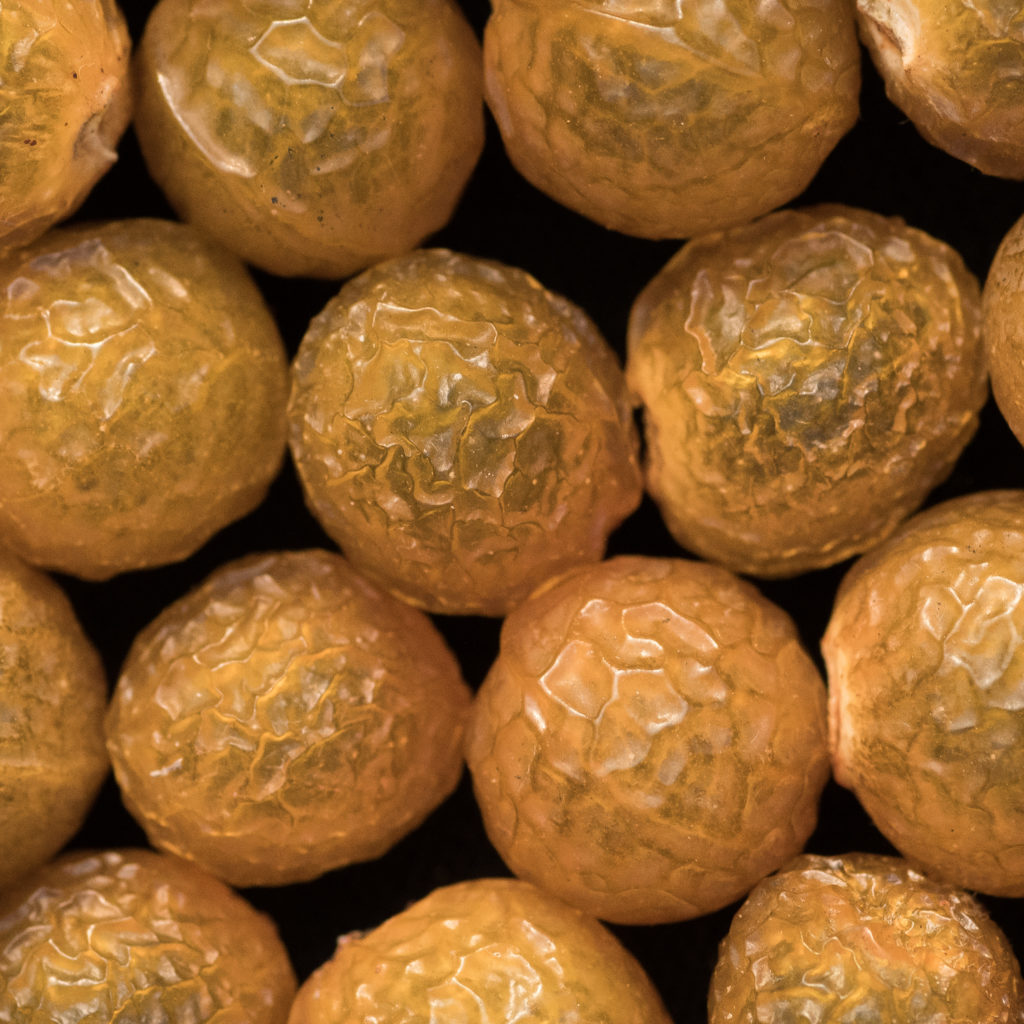
- Seeds of the soapberry (Sapindus Saponaria) collected from the 7B Ranch land-exchange parcel on the San Pedro River. WestLand botanists and TNF tribal monitors are researching this unique grove for presentation at the Botany 2019 conference.
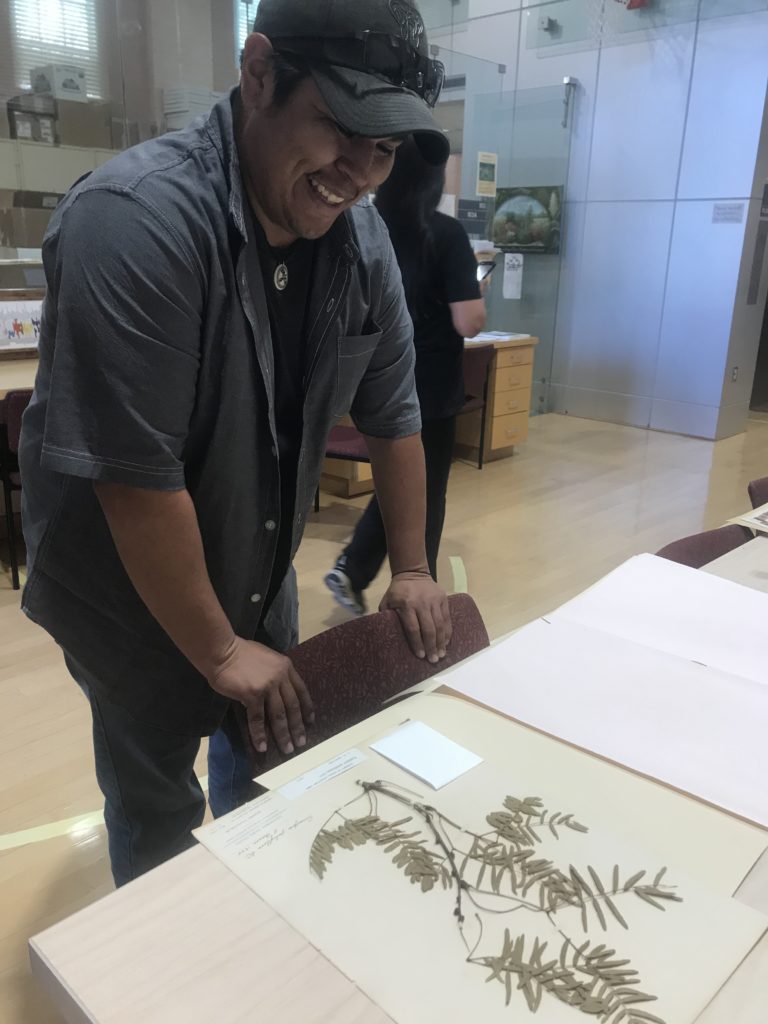
- Hopi tribal monitor Joe Montoya learning about the plant collection at the U of A.

